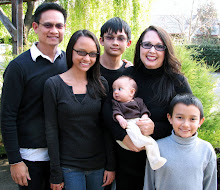Grade seven and I spent three days on the circulatory system, or cardiovascular system (CVS). The transition from the digestive system was seamless, as we followed the absorbed nutrients from the small intestine to the bloodstream. The circulatory system distributes necessary nutrients, energy stores, and oxygen throughout the body.
Day One: THE BLOOD
We discussed that there is about 5 liters of blood in an average sized adult. Going to the microscopic level, we thought about what is really in blood. If we were to examine a given sample of blood (I simply drew a test tube on the board), it shows about 50% fluid, the plasma, which contains the sugars and proteins floating around in it. About 4% are the platelets, which help our blood clot, and 1% white blood cells, essential against germs. The most important element in our discussion was the red blood cells at 45%. Using a clear vase, I poured water into it, put in an apple to represent a red blood cell, an orange to represent a white blood cell, a chestnut for the platelet, and an assortment of stones and shells to show the other stuff in the plasma. I wanted to show the students that a sample of blood contains a number of individual cells, with the RBCs giving the red color of blood. How many red blood cells can fit on the head of a pin? Five million!
Day Two: THE VESSELS

Transporting the blood all over the body are the blood vessels. I showed that the capillary beds (those web-like areas on the diagram above) were the sight of oxygen and carbon dioxide exchange, and nutrient movement to the tissues and organs. From arteries arose smaller diameter tubes called arterioles, to capillaries, then widens to form the venuoles (carrying deoxygenated blood), and to veins. Capillaries are just wide enough in diameter to allow one RBC (1/3500 inches in diameter) at a time to travel. Its walls are thin, which allow for gases like oxygen to pass from the lungs to the blood, and oxygen in the blood to muscles and organs. I had the students act as RBCs and they had to squeeze in between desks I arranged in the room and travel in single file.
The diagram shows the circulation of the blood in the body and into the heart. This super highway of blood vessels cycles blood at about 5 liters per minute. You can follow the path on the diagram above.
Day Three: THE HEART

We then discussed the pumping station of the system that keeps that blood going and going, the heart. It has four chambers that act in concert to receive and eject blood. The diagram above represents the cycle of the heart, showing the "lub-dub" of the heart. The two heart sounds are when the valves in the heart close. The LUB is in the beginning of ventricular contraction, forcing the valves between atria and ventricles to close. The DUB is when the ventricles just finish contracting, and the blood from the exiting vessels (the aorta and pulmonic artery) push the aortic and pulmonic valves close. The kids enjoyed the stethoscope I allowed them to use to listen to their heart beats!



1 comment:
Awesome Rick! Love the drawings--beautiful and extremely helpful when understanding how the circulatory system works. :-)
Take care,
Laurie in Murrieta
Post a Comment